Age-dependent Lamin changes induce cardiac dysfunction via dysregulation of cardiac transcriptional programs
- PMID: 36845078
- PMCID: PMC9956937
- DOI: 10.1038/s43587-022-00323-8
Age-dependent Lamin changes induce cardiac dysfunction via dysregulation of cardiac transcriptional programs
Abstract
As we age, structural changes contribute to progressive decline in organ function, which in the heart act through poorly characterized mechanisms. Taking advantage of the short lifespan and conserved cardiac proteome of the fruit fly, we found that cardiomyocytes exhibit progressive loss of Lamin C (mammalian Lamin A/C homologue) with age, coincident with decreasing nuclear size and increasing nuclear stiffness. Premature genetic reduction of Lamin C phenocopies aging's effects on the nucleus, and subsequently decreases heart contractility and sarcomere organization. Surprisingly, Lamin C reduction downregulates myogenic transcription factors and cytoskeletal regulators, possibly via reduced chromatin accessibility. Subsequently, we find a role for cardiac transcription factors in regulating adult heart contractility and show that maintenance of Lamin C, and cardiac transcription factor expression, prevents age-dependent cardiac decline. Our findings are conserved in aged non-human primates and mice, demonstrating that age-dependent nuclear remodeling is a major mechanism contributing to cardiac dysfunction.
Figures
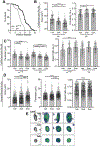
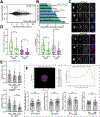
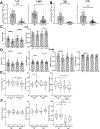
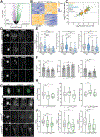
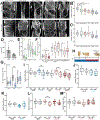
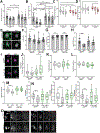
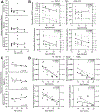
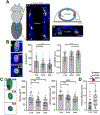




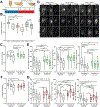
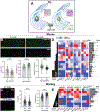
Comment in
-
Nuclear remodelling contributes to cardiac dysfunction during ageing.Nat Rev Cardiol. 2023 Mar;20(3):140. doi: 10.1038/s41569-023-00832-y. Nat Rev Cardiol. 2023. PMID: 36653464 No abstract available.
Similar articles
-
Lamin A/C-dependent chromatin architecture safeguards naïve pluripotency to prevent aberrant cardiovascular cell fate and function.Nat Commun. 2022 Nov 4;13(1):6663. doi: 10.1038/s41467-022-34366-7. Nat Commun. 2022. PMID: 36333314 Free PMC article.
-
Role of nuclear Lamin A/C in cardiomyocyte functions.Biol Cell. 2014 Oct;106(10):346-58. doi: 10.1111/boc.201400033. Epub 2014 Aug 20. Biol Cell. 2014. PMID: 25055884 Review.
-
Heterozygous LmnadelK32 mice develop dilated cardiomyopathy through a combined pathomechanism of haploinsufficiency and peptide toxicity.Hum Mol Genet. 2013 Aug 1;22(15):3152-64. doi: 10.1093/hmg/ddt172. Epub 2013 Apr 10. Hum Mol Genet. 2013. PMID: 23575224
-
AP-1 Contributes to Chromatin Accessibility to Promote Sarcomere Disassembly and Cardiomyocyte Protrusion During Zebrafish Heart Regeneration.Circ Res. 2020 Jun 5;126(12):1760-1778. doi: 10.1161/CIRCRESAHA.119.316167. Epub 2020 Apr 21. Circ Res. 2020. PMID: 32312172 Free PMC article.
-
Epigenetic and lncRNA regulation of cardiac pathophysiology.Biochim Biophys Acta. 2016 Jul;1863(7 Pt B):1767-71. doi: 10.1016/j.bbamcr.2016.03.005. Epub 2016 Mar 9. Biochim Biophys Acta. 2016. PMID: 26969820 Free PMC article. Review.
Cited by
-
Vinculin haploinsufficiency impairs integrin-mediated costamere remodeling on stiffer microenvironments.J Mol Cell Cardiol. 2025 Mar;200:1-10. doi: 10.1016/j.yjmcc.2025.01.001. Epub 2025 Jan 8. J Mol Cell Cardiol. 2025. PMID: 39793757
-
Nuclear mechanosignaling in striated muscle diseases.Front Physiol. 2023 Mar 7;14:1126111. doi: 10.3389/fphys.2023.1126111. eCollection 2023. Front Physiol. 2023. PMID: 36960155 Free PMC article. Review.
-
Overview of cellular homeostasis-associated nuclear envelope lamins and associated input signals.Front Cell Dev Biol. 2023 May 12;11:1173514. doi: 10.3389/fcell.2023.1173514. eCollection 2023. Front Cell Dev Biol. 2023. PMID: 37250905 Free PMC article. Review.
-
Molecular Mechanisms Behind Organ-Related Aging and Regulatory Effects of Natural Therapeutics.Cell Biochem Biophys. 2025 Jun 17. doi: 10.1007/s12013-025-01792-5. Online ahead of print. Cell Biochem Biophys. 2025. PMID: 40528054 Review.
-
Chromatin accessibility: biological functions, molecular mechanisms and therapeutic application.Signal Transduct Target Ther. 2024 Dec 4;9(1):340. doi: 10.1038/s41392-024-02030-9. Signal Transduct Target Ther. 2024. PMID: 39627201 Free PMC article. Review.
References
-
- Gilbert HTJ & Swift J The consequences of ageing, progeroid syndromes and cellular senescence on mechanotransduction and the nucleus. Exp Cell Res 378, 98–103 (2019). - PubMed
-
- CDC, N. Underlying Cause of Death 1999-2013 on CDC WONDER Online Database, released 2015. Data are from the Multiple Cause of Death Files, 1999-2013, as compiled from data provided by the 57 vital statistics jurisdictions through the Vital Statistics Cooperative . (2015).
Publication types
MeSH terms
Substances
Grants and funding
LinkOut - more resources
Full Text Sources
Medical
Research Materials

